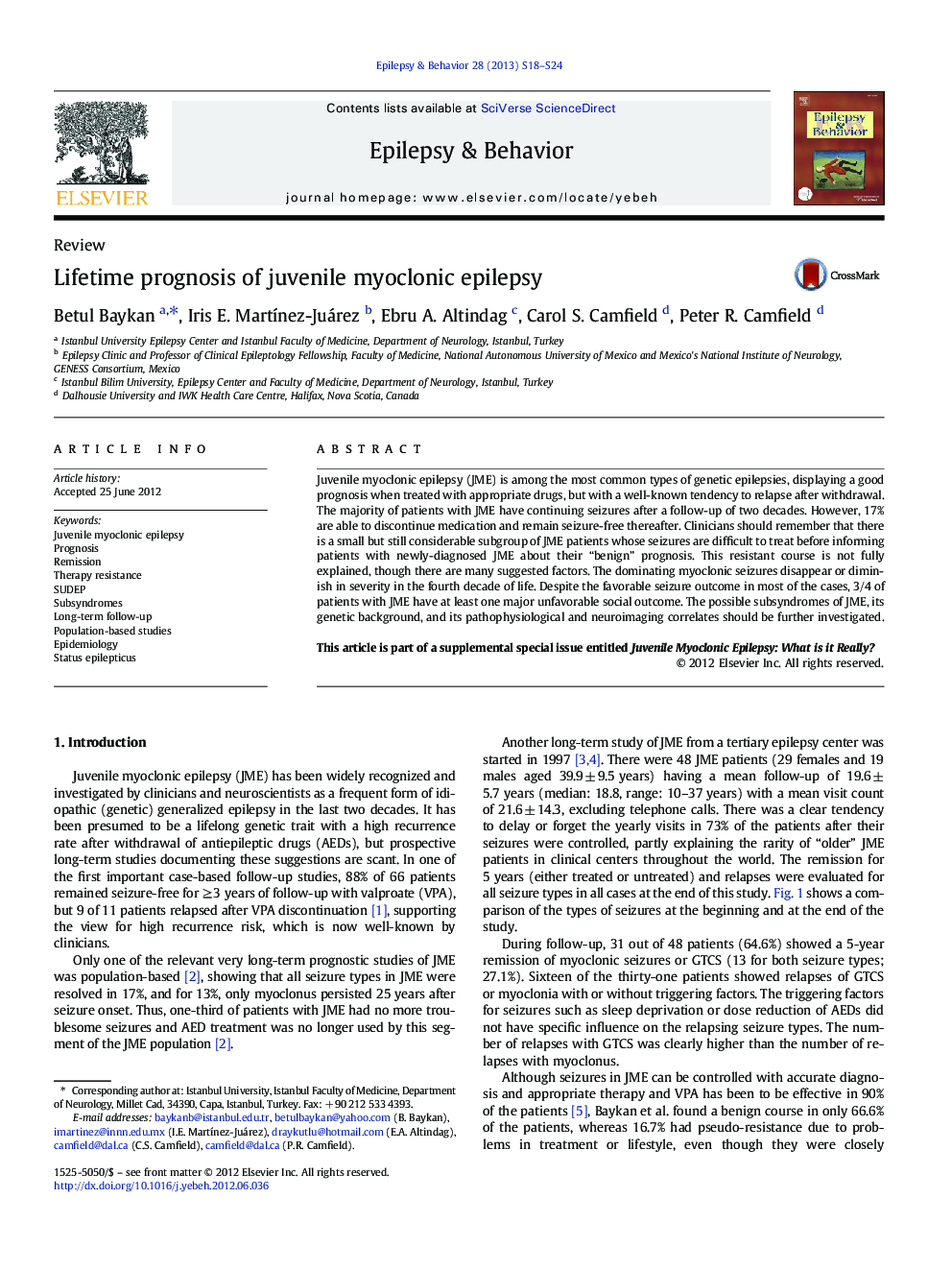| Article ID | Journal | Published Year | Pages | File Type |
|---|---|---|---|---|
| 3049734 | Epilepsy & Behavior | 2013 | 7 Pages |
Juvenile myoclonic epilepsy (JME) is among the most common types of genetic epilepsies, displaying a good prognosis when treated with appropriate drugs, but with a well-known tendency to relapse after withdrawal. The majority of patients with JME have continuing seizures after a follow-up of two decades. However, 17% are able to discontinue medication and remain seizure-free thereafter. Clinicians should remember that there is a small but still considerable subgroup of JME patients whose seizures are difficult to treat before informing patients with newly-diagnosed JME about their “benign” prognosis. This resistant course is not fully explained, though there are many suggested factors. The dominating myoclonic seizures disappear or diminish in severity in the fourth decade of life. Despite the favorable seizure outcome in most of the cases, 3/4 of patients with JME have at least one major unfavorable social outcome. The possible subsyndromes of JME, its genetic background, and its pathophysiological and neuroimaging correlates should be further investigated.This article is part of a supplemental special issue entitled Juvenile Myoclonic Epilepsy: What is it Really?
► Long-term follow-up indicates that JME is a lifelong disorder for the majority. ► Myoclonic seizures subside in the fourth decade in JME. ► Four JME subsyndromes are described based on electroclinical findings. ► A resistant course seen in 1/6 of JME patients is not fully explained. ► 74% of JME patients have at least one major marker of unfavorable social outcome.
